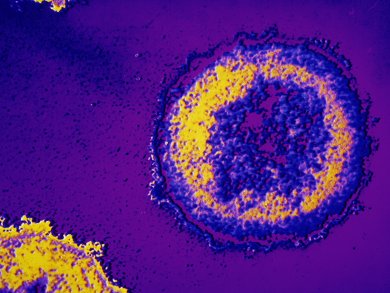The virus detector developed by a team led by John Connor and Hatice Altugis, Boston University, USA, is based on a platform not much bigger than a coin that has an array of plasmonic nanoholes with diameters from 200 to 350 nm on a metallic film. When a live virus in a sample solution binds to the biosensor surface, the refractive index of the surface changes, causing a detectable shift in the resonance frequency of any light transmitted through the nanohole array. The size of the shift reflects the concentration of the virus in the solution. The developers have shown that the device will work for hemorrhagic fevers, such as Ebola and pox viruses, including smallpox.
Image: (c) PhotoDisc
- An Optofluidic Nanoplasmonic Biosensor for Direct Detection of Live Viruses from Biological Media
A. A. Yanik, M. Huang, O. Kamohara, A. Artar, T. W. Geisbert, J. H. Connor, H. Altug,
Nano Lett. 2010.
DOI: 10.1021/nl103025u



